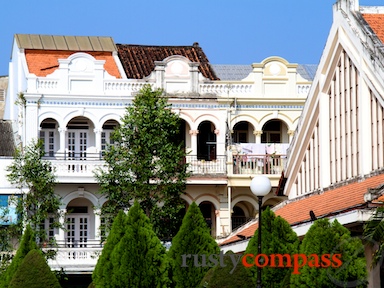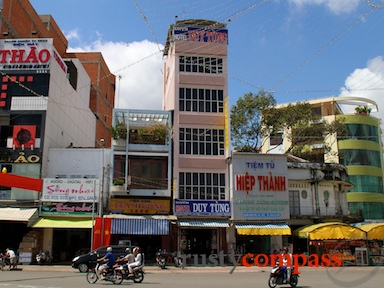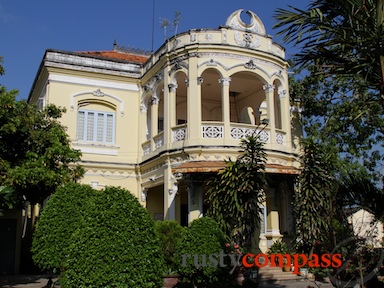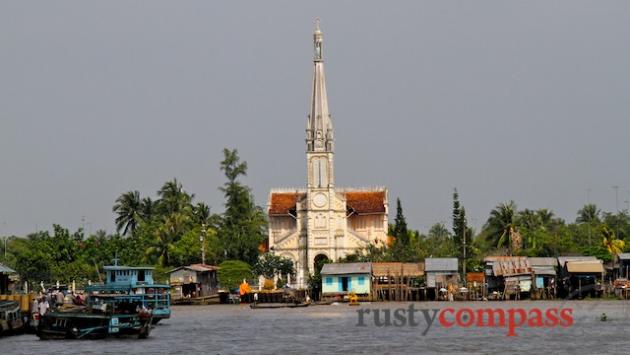
Photo: A pocket of surviving shophouses, Can Tho
What’s sad though is the sense that the small pockets of architectural beauty and atmosphere that are left face imminent demolition. Prosperity not poverty is wiping out the delta of old. Increasingly, delta towns replicate the charmless architectural chaos of the new Saigon.
And as with Saigon, future generations of delta dwellers will regret the shortsightedness of those that presided over planning and development. Not only have they destroyed large tracts of attractive heritage architecture, they have damaged the economic bounty that some thoughtful preservation of these assets would have brought to these towns.

Photo: Mark BowyerTra Vinh, Mekong Delta. A view of the future.
The Hoi An message is clear. Thoughtful preservation makes sense not only to please the whims of pseudo aesthetes like myself, it creates beautiful places that pay their own way because people like being in such places. Hoi An’s commercial success is phenomenal. The town is brimming with tailors, handicraft stalls, restaurants, bars, luxury hotels and spas. Both Vietnamese and international visitors love the place.
As I travelled through the Mekong Delta, it struck me what a lost opportunity the destruction of the old shophouses has been. Imagine mini Hoi An old towns throughout the Mekong Delta? They would have been magnets for tourists for decades. And they would only have needed to cover a few hundred metres of riverfront. Of course they would not have rivalled Hoi An in scale - but they would have given the delta an invaluable additional income stream. And they would have ensured some beauty and character survived what, in the future, will be viewed as a regrettable binge of concrete worship.
The Mekong Delta has played an outsized role in Vietnam’s growth in prosperity during recent decades. It supplies 50% of the country’s rice and 70% of its rice exports. The delta’s rice crop is an important contributor to global rice output. Its, fruit, vegetable and aquaculture output is also formidable. So large scale change was always a certainty. And like everywhere, that change was bound to bring with it plenty of ugliness and plenty of destruction of the old. Even so, the preservation of small areas of riverfront could have provided some much needed character and charm - with little real downside.

Photo: Mark BowyerOne of Ben Tre's French era gems. Buildings like this are fast disappearing.
All is not totally lost. Something of value could be salvaged in Ben Tre and Tra Vinh and no doubt other places. After all, this only requires a commitment to preserve a relatively small piece of waterfront. And I’m sure there are still some isolated small towns that could help to cultivate some “old town” atmosphere. But someone with some authority is going to need to act quickly if Vietnam is not going to see another piece of its history, heritage and an important tourism opportunity wither.
The delta still has plenty to offer travellers, especially towns beyond My Tho, the boat trips and the rural scenery. It’s much harder to say whether much of value will survive the coming decade however - apart from the enduring charm and hospitality of the people.





There are no comments yet.